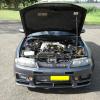Busted My Poopoo Valve
Announcements
-
Similar Content
-
Latest Posts
-
By TurboTapin · Posted
Yes and no. My second sentence is trolling but being that you're also from North America, I was really hoping you would catch onto my ICP reference. Then again, I'm probably one of the only idiots who listened to ICP when I was younger. Jokes aside, if the magnet went in through the drain hole, then I'm sure you can get it out by there. Try some of the options the others have listed. -
By TurboTapin · Posted
Just get the magnet out... I can think of 37 different options to get it out without removing the pan. 4-5x of those options are already mentioned here. I personally would drill a larger hole in the pan, pull the magnet out and then block the hole with another magnet. Then reuse another magnetic oil plug. The more magnets the better. -
How f**ked am i? what would happen if i leave the magnet inside there?
-
I'll update you guys when i get home from work, im going to try to fish it out. I just realized that i can't even drop the oil pan. The whole front diff and axles are connected to the oil pan... is it even possible to drop the oil pan without taking out the motor?
-



.thumb.jpg.0587eb4ad8984ef89760b02271b3381b.jpg)

Recommended Posts
Create an account or sign in to comment
You need to be a member in order to leave a comment
Create an account
Sign up for a new account in our community. It's easy!
Register a new accountSign in
Already have an account? Sign in here.
Sign In Now